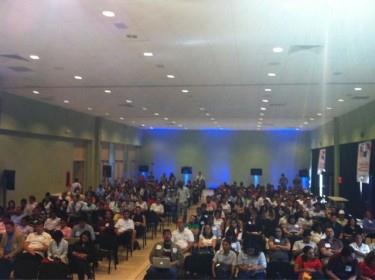
|
Network Society
People and Organization On-line: Stage 3
According to the Latin Business Chronicle, Panama is one of the top three
nations in the Latin America region when it comes to technology and Internet
penetration. The data includes statistics on Internet penetration, personal
computers, wireless subscribers and fixed-line telephony. With significant
telecom infrastructure and a liberalized market, Panama has become an attractive
country for telecom investments.
Based on the data of December 2011, the population of Panama is 3.4 million out
of which 1.5 million are internet users which
make the population penetration 43.4 %. The ratio of internet users per 100 is
42. The main age group that uses the internet is between the age of 18 and 34.
Social media, such as Facebook, Twitter and LinkedIn, is also mostly used within
the same age group. In Panama women are more active than men in both the
Internet and mobile user space.
Internet Usage and Population Growth:
|
YEAR
|
Users
|
Population
|
% Pen.
|
Usage Source
|
|
2000
|
45,000
|
2,839,177
|
1.6 %
|
ITU
|
|
2008
|
264,316
|
3,292,693
|
8.0 %
|
ITU
|
|
2009
|
934,500
|
3,360,474
|
8.0 %
|
ITU
|
|
2010
|
959,900
|
3,410,676
|
28.1 %
|
ITU
|
|
2011
|
1,503,441
|
3,460,462
|
43.4%
|
ITU
|
The International Telecommunication
Union (ITU) is the specialized agency of the United Nations which is
responsible for information and communication technologies.
The popularity of social media can also be supported by the fact that in 2010
Panama hosted a social event of social media in which people learned about other
social sites such as twitter and blogging. The
event was very well organized and a success in all aspects.

Locally Relevant Content: Stage 3
The official
language of Panama is Spanish, and according to the 2010 census about 14% of the
population speaks English. There has been an influx of retirees to the areas, so
there is also a portion of the population that speaks a language other than
Spanish. Since 2004, English language training is compulsory in elementary and
high school. The majority of businessmen, top government officials and executive
staff are fully bilingual.
One of the
challenges for websites is provide the content in format and language that makes
it useful for its audience. There are thousands of local websites available that
offer news, sports, local recreation and entertainment (music downloads and online gaming), education and
other services (such as shopping, banking, etc) some of which are available in
both English and Spanish. Social media such as Face book and Blogs are becoming
widely popular and recently Netflix has been made available.
Internet
access has been available in the school systems since 2004 and recently the
government has established hundreds of free internet hot spots throughout the
country. The Panama top-level domain
is .pa and the average cost for a domain is about $150 or more per year which
makes it a relatively low cost option for businesses. All these advancements make the
citizens of Panama strongly represented on the World Wide Web.
Information and communication technologies in Everyday
Life: Stage 3
With one of the region’s highest GDP growth forecast for 2011-12, the outlook is
promising for Panama’s telecom market. The GDP per capita is the highest in
Central America and is amongst the five fastest growing countries in Latin
America. In 2011-12, telecom revenues are expected to exceed US $1.15 billion,
with mobile services and broadband being the fastest growing sectors.
Competition is limited in the broadband sector, where Cable & Wireless Panamá is
reluctant to unbundle its local network and has secured a virtual monopoly in
the delivery of ADSL access. The only competition is across technologies, from
cable modem and WiMAX services.
The mobile sector, on the other hand, has been flourishing, with penetration
well above the 100% milestone and about 30% higher than the regional average.
The arrival of two new mobile players around the start of 2009 has resulted in
high levels of promotional activity and steep price reductions that have shaken
the market. Digicel Panamá began operations in 2008 and América Móvil’s Claro in
2009. Previously, Panama’s mobile market had been a duopoly between Cable &
Wireless Panamá and Telefónica’s Movistar.
Internet
penetration is expected to grow further in 2012 thanks to the government’s
Internet for all projects. In 2010, Panama became one of the first countries in
the world to offer free wireless broadband access nationwide, reaching 80% of
the population. The National Internet Network project does not compete with
private broadband providers, because its aim is digital inclusion and not the
provision of high-speed access.
Information & Communication Technologies in the Workplace:
Stage 3
Panama is
working to become an international hub specializing in Information and
Communication Technologies (ICT). Panama President Ricardo Martinelli has made
“closing the digital gap” a key priority of his administration. Eduardo Jaen,
who heads Panama’s National Authority for Government Innovation, attributes the
rise in use to government support for Internet access and success at luring new
businesses into the modern capital. More than 60 corporations, including tech
giants Dell and 3M, shifted regional headquarters to Panama since 2007. Internet
penetration in Panama was up 43 percent last year. About 35,000 individuals and
legal entities have registered as Panamanian companies online, according to
government figures. Panama has the best access to multiple high-bandwidth
continental fiber optic networks in telecommunications infrastructure thus
pushing business to integrate ICT into the workplace.
Online chat and e-mail is
the main source for internal communication for employees. Many businesses have
their systems networked for management, data processing and for enterprise
applications. Usage of internet at workplace is getting a lot of popularity as
e-commerce is growing and benefiting corporations.

|
 |